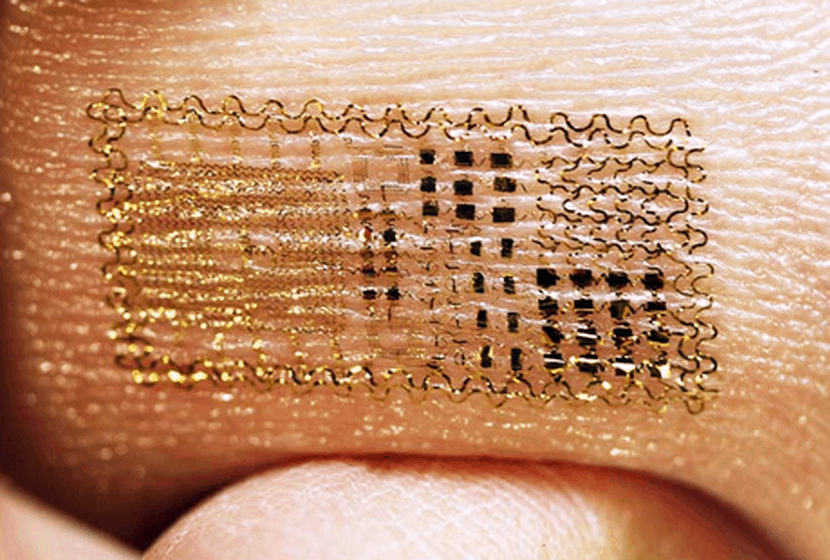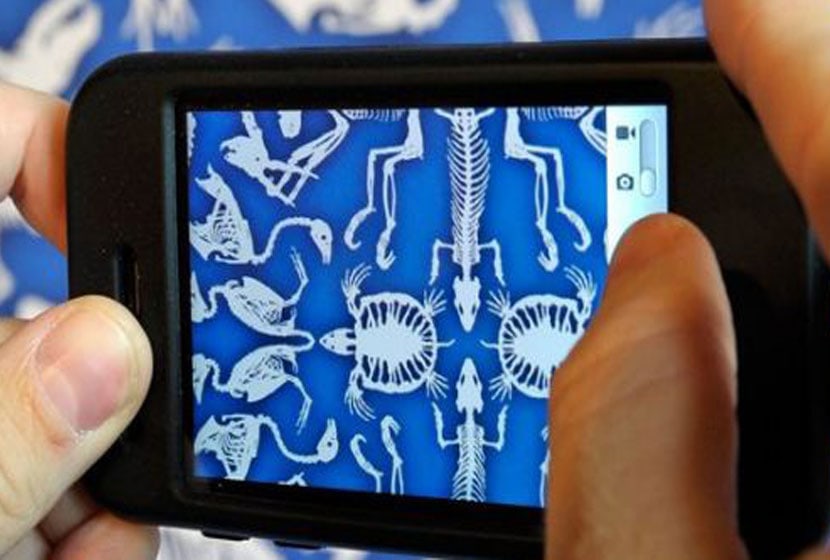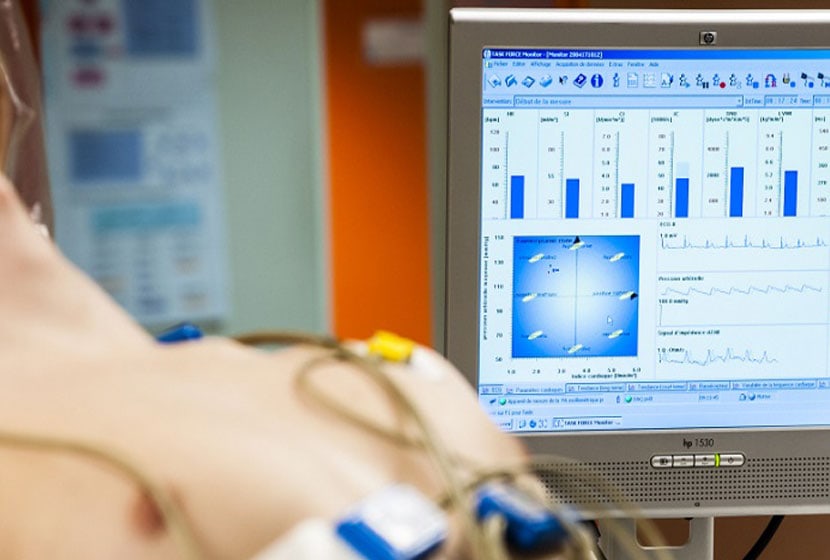In January 2005, Laurence Summers, President of the prestigious American University of Harvard, stated that "...the most important thing is that we have to be able to do something about it. the low number of women in scientific disciplines is due to their innate inability to succeed in these fields". ! It has caused a scandal in academic, feminist and scientific circles. The mainstream press seized the event, confronting conflicting opinions (see Time Magazine, March 2005). Indeed, some scientists have intervened to defend Summers against feminists (Pinker, 2005). These scientists claimed that gender differences in the brain, hormones and prehistoric inheritance were responsible for women's poorer performance in mathematics. To challenge this claim would therefore be a matter of obscurantism, a lack of knowledge of science and partisan ideological positions, such as those attributed to feminists....
Photo: Bust of Aphrodite, Hadrian's time, copy of a Greek original from the 4th century B.C., discovered in the ancient amphitheatre of Capua where it decorated the porch leading to the upper tiers (Naples, National Museum of Archaeology, inv.6019).
This is the recurring problem of authoritative scientific expertise for an uninformed public. How can one assess the validity of the arguments put forward when one is not a specialist? Finally, the American Academies of Medicine, Science and Technology have been mobilized to take stock of the issue.
Their report, published in 2006 (The National Academies Press), clearly states that "studies on brain structure and function, the influence of hormones and the evolution of the human species, do not indicate significant gender differences in cognitive skills that could explain the under-representation of women in scientific professions (...) This situation is the result of individual, social and cultural factors". Phew! At last, women have a legitimate claim to scientific careers...
 It is clear that despite advances in neuroscience knowledge, prejudices about biological differences between men and women are still very much alive. The media and magazines continue to feed us with old clichés that claim that women are "naturally" talkative, sensitive and unable to read a road map, whereas men were born good at math, competitive and brawlers. These speeches make the success of books by unscrupulous psychologists who claim to explain communication problems between men and women.
It is clear that despite advances in neuroscience knowledge, prejudices about biological differences between men and women are still very much alive. The media and magazines continue to feed us with old clichés that claim that women are "naturally" talkative, sensitive and unable to read a road map, whereas men were born good at math, competitive and brawlers. These speeches make the success of books by unscrupulous psychologists who claim to explain communication problems between men and women.
But the media are far from being the only ones involved. Some scientific circles are actively promoting the idea of a biological determinism of gender differences in ability. Whether it is cognitive tests, brain imaging studies or the discovery of new genes, experimental data are often out of proportion to their ideological exploitation. Thus the comments of the scientific journal "Nature" on an article on the alleged genetic basis of female intuition: "In the second half of the 20th century, the fight for gender equality tended to reduce the role of biological factors in psychological differences between men and women. For the first time we have evidence of the location of a gene involved in gender behavioural differences, challenging the prevailing belief that gender differences are largely determined by cultural factors. (Nature, vol. 387, 1997). It should be noted that the genetic study in question has never been replicated by other research teams, which raises doubts about its validity .
Another eloquent example is the work of Doreen Kimura, professor of psychology at the University of Ontario, who is looking for links between gender, cognitive performance and ... fingerprint striations! According to Kimura, men's higher math scores are correlated with a higher number of fingerprint striations than women. Knowing that finger striations are genetically determined, Kimura argues that the same is true for math skills, which explains "the lower productivity of women scientists compared to their male counterparts"... (Kimura, Odile Jacob, 2001).
An examination of contemporary scientific production shows that this type of position is not the work of isolated researchers. It corresponds to a current of ideas that has a name and a long history: it is the theory of biological determinism, which claims that the social order is a reflection of a biological order.
This vision was flourishing in the 19th century. Men were thought to be smarter than women because they had bigger brains. True, men's brains weigh an average of 1,350 kg compared to 1,200 kg for women. But because of the differences in body size, neither sex has a larger brain than the other. Moreover, there is no relationship between brain size and intellectual capacity. Famous examples are the brains of Anatole France and Ivan Turgenev: the first weighed 1kg and the second 2kg. As for Einstein, his brain weighed 1,250 kg, just like that of women!
 The two-brains theory is also still in the spotlight, even though it is more than forty years old. It claims that women's language skills are the result of a dominant left hemisphere, while men's better performance in spatial orientation and mathematics is the result of a more efficient right hemisphere.
The two-brains theory is also still in the spotlight, even though it is more than forty years old. It claims that women's language skills are the result of a dominant left hemisphere, while men's better performance in spatial orientation and mathematics is the result of a more efficient right hemisphere.
Today, this theory is considered obsolete because it is far too simplistic in the face of the new data revealed by MRI brain imaging technologies. These fabulous tools, which allow us to see the living brain at work, show that the two hemispheres are in constant communication and that neither hemisphere works in isolation. Moreover, a function is never located exclusively in one region. Previously, according to the work of Broca in brain-damaged patients, language functions were thought to be localized in a circumscribed area of the left hemisphere. Since then, brain imaging has revealed that language mobilizes not just one, but a dozen regions that form a network that includes both hemispheres. And when we compare the brains of men and women, statistical analyses in MRI do not show any gender difference in the distribution of language areas. (Kaiser, 2009).
It is interesting to note that the two-brains theory, although totally outdated, is still widely cited as a reference. Its impact was considerable in the 70s and 80s, coinciding with the hippy movement, which saw a number of spiritualist movements and popular works flourish.
The specialization of the hemispheres has become a theme in which all sorts of speculation is being poured. On the left, language, reason, entrepreneurship, Western values. On the right, the perception of space, affectivity, contemplation, Eastern and Asian values. And on top of these so-called cerebral differences came the differences between the sexes...
What about gay brains?
 In 1991, an American researcher, Simon LeVayIn the journal "Science", an article comparing the anatomy of the brain in men and women, but also in homosexual men, was published in the journal "Science". The study, carried out on about 20 brains preserved in formalin, showed a difference of one tenth of a millimetre between the brains of heterosexual men compared to the brains of homosexual men and women. On the basis of this result, the author concluded that "that there is a biological substrate for sexual orientation." (LeVay, 1991).
In 1991, an American researcher, Simon LeVayIn the journal "Science", an article comparing the anatomy of the brain in men and women, but also in homosexual men, was published in the journal "Science". The study, carried out on about 20 brains preserved in formalin, showed a difference of one tenth of a millimetre between the brains of heterosexual men compared to the brains of homosexual men and women. On the basis of this result, the author concluded that "that there is a biological substrate for sexual orientation." (LeVay, 1991).
This view was severely criticized by the scientific community because the reliability of the published results was highly questionable. (Vidal, 2005).
A major bias of this study is that the brains of the homosexual men came from patients who died of AIDS, unlike the heterosexual group. It is known that the AIDS virus enters the brain and produces lesions. Therefore, the comparison with brains not infected with the virus is not valid. It should also be noted that a variation of one tenth of a millimetre of brain matter corresponds to a few dozen neurons, which is very little compared to the one hundred billion neurons in the human brain. It is inconceivable that a tiny group of neurons should determine human sexual behaviour, which is so complex and varied over time according to the history of each individual.
So far, there is no scientifically validated argument to say that homosexuality is due to biological causes, be it hormones, the brain or genes. Almost twenty years ago, researchers claimed to have found a gene for homosexuality. Since then, their findings have been completely denied, but the media success has been such that the story still lingers in people's minds.
It is important to note that these studies on homosexuality, which are clearly not scientifically rigorous, have been published in the journals "Nature" and "Science", which are reputed to apply highly selective criteria in the selection of articles submitted to them. Unfortunately, in recent years, this kind of exception to the rule has become less and less rare when it comes to subjects with a high media profile.
What is the answer today to the question: does the brain have a sex?
 The scientific answer is yes and no. Yes, because the brain controls the functions associated with sexual reproduction, which are obviously different in women and men. In female brains, there are neurons that are activated every month to trigger ovulation, which is not the case in men.
The scientific answer is yes and no. Yes, because the brain controls the functions associated with sexual reproduction, which are obviously different in women and men. In female brains, there are neurons that are activated every month to trigger ovulation, which is not the case in men.
But concerning cognitive functions (reasoning, memory, attention, language), brain diversity is the rule, regardless of gender. Thanks to MRI brain imaging, it has been shown that the differences between individuals of the same sex are so great that they exceed the differences between the two sexes. (Vidal, 2005).
This variability is explained by the plasticity of the brain. At birth, only 10% of our 100 billion neurons are connected to each other. The remaining 90% of connections will be built up gradually according to the influences of family, education, culture and society. For example, in pianists, there is a thickening of the regions of the cerebral cortex that specialize in finger movement and hearing. Moreover, these changes in the cortex are directly proportional to the amount of time spent learning to play the piano in childhood.
Brain plasticity is also at work during adult life. For example, in subjects who learn to juggle three balls, after three months of practice, there is a thickening of the areas that control arm coordination and vision; and if training stops, the previously thickened areas regress. These examples allow us to understand why we all have different brains, regardless of gender. (Vidal, 2009).
The plasticity properties of the brain shed new light on the processes that help forge our identities. At birth, the human baby does not know its sex. They will certainly learn very early on to distinguish between the masculine and feminine, but it is only from the age of two that they become capable of identifying with one of the two sexes. Well before the age of two, however, he or she is in a gendered environment: the bedroom, toys, clothing and adult behaviour are different depending on the sex of the young child. It is the interaction with the family, social and cultural environment that will guide the development of certain aptitudes and help shape personality traits. But not everything is played out during childhood. At all stages of life, the plasticity of the brain enables us to change habits, acquire new talents and choose different life paths.
Yet, despite all this evidence, there is still the idea that it is in "biological nature" that we must look for the key to our behaviour, our emotions and our values. We are regularly told of new "discoveries": the gene of fidelity, the molecule of desire, the neurons of "care"!
These speeches would not matter if they were not amplified by the media and fed to an uninformed public that is ultimately fooled. And beyond that, the consequences on social life are not insignificant. If our mental abilities and talents are embedded in our biological nature, why push girls to do science and boys to learn languages? What is the point of tutoring and co-education? If a "natural" explanation is given for the social and professional differences between men and women, any social programme for equal opportunities becomes useless.
 The success of bio-determinist theories lies in the fact that they make it possible to use "clear and objective scientific evidence" to remove social, cultural and political reasons for gender inequalities, which are necessarily more complex to identify.
The success of bio-determinist theories lies in the fact that they make it possible to use "clear and objective scientific evidence" to remove social, cultural and political reasons for gender inequalities, which are necessarily more complex to identify.
But there is also another issue in wanting to show brain differences between the sexes. The subject is of interest to the pharmaceutical industry, which is seeking to diversify its range of molecules in order to increase its markets. The idea would be to offer drugs that are different for men and women, not to mention the sale of miracle products to stimulate femininity or virility.
The speed with which brain science is creeping into society is striking. Neuro" is everywhere: neuroeconomics, neuromarketting, neurophilosophy, neurogymnastics and even neurojustice. (Ravages, No. 4, 2011). Behind this "neurophilia" lies yet another avatar of the ideology of biological determinism that paves the way for contemporary "neurosexism". The drift towards the misuse of biology to explain gender differences remains a real threat to democracy.
So what to do? Faced with the perverse effects of biological reductionism, resistance is being organized. In March 2010 in Uppsala (Sweden), a group of women from different countries (Australia, Germany, Canada, United States, France, Italy, Sweden, Switzerland), made up of neurobiologists, philosophers and sociologists, founded an international network called the "Neuro-Gendering Network" (http://www.neuroethics.upenn.edu/).
The objective of the network is to defend ethics in the production of knowledge in neuroscience and to awaken the responsibility of researchers for the impact of their work in a social and anthropological context. Another priority of the network is to disseminate quality information to the general public and thereby promote a positive image of scientific research on the brain, sex and gender. Neuroethics against neuro-sexism!
Catherine Vidal (Revue Ravages, n°6, " Mauvais Genre ")
Bibliography
Kimura D. (2001) Brain of a man, brain of a woman, Ed. Odile Jacob
LeVay, S. (1991) A difference in hypothalamic structure between heterosexual and homosexual men, Science, vol 253, 1034-1037.
National Academies Press (2006) Biological, social and organizational components of success for women in academic science and engineering: workshop report, pp 1-245.
Pinker, S. (2005) Il y a des différences entre les sexes, Le Courrier International, No. 747.
Kaiser, A. et al... 2009. On sex/gender related similarities and differences in fMRI language research. Brain Research Reviews, 61, 49-59.
Vidal, C. and Benoit-Browaeys, D. (2005) Brain, Sex and Power, Ed. Belin.
Vidal, C (2009) "Does the brain change over the course of life? "Ed. Le Pommier
![]()
Recent works by Catherine Vidal:
–"Brain, sex and power", Catherine Vidal and Dorothée Benoit-Browaeys, Belin 2005
– "Does the brain change over the course of life? »Edition Le Pommier, 2009
– "Our children under strict supervision." Sylviane Giampino and Catherine Vidal, Edition Albin Michel, 2009
– "Do girls have brains for math?"Edition Le Pommier, 2012
– "Men, women: do we have the same brain? Edition Le Pommier, 2012
{Jacuzzi on}












